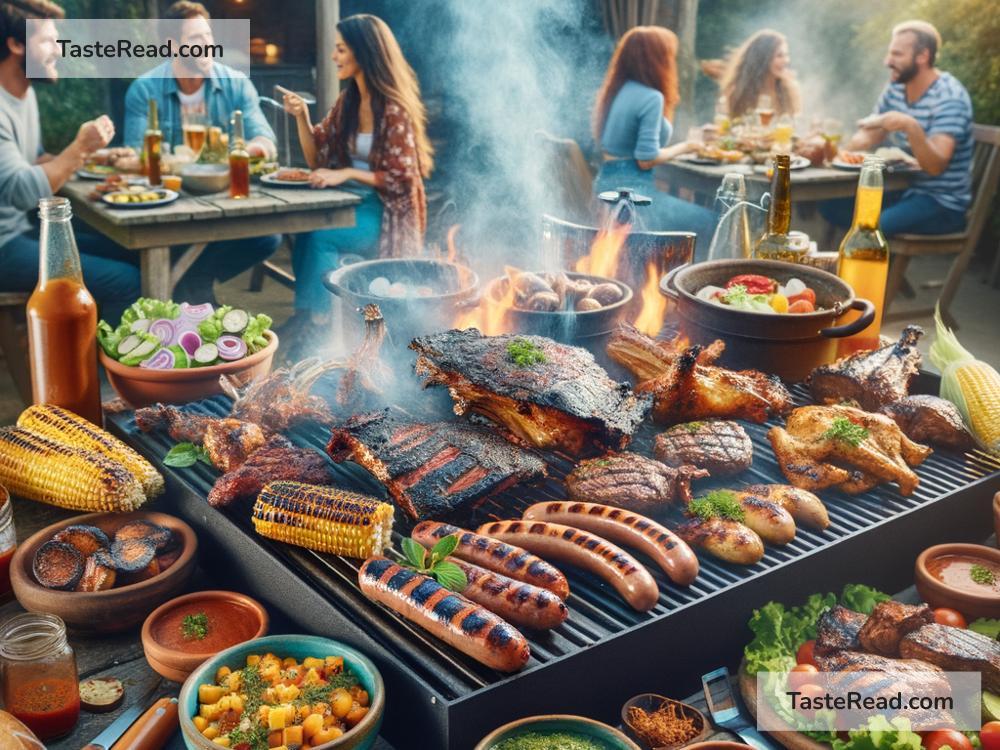South American Barbecue: A Taste of Tradition and Culture
Barbecue is loved worldwide, but in South America, it’s more than a meal—it’s a celebration of culture, family, and tradition. Whether you’re in Argentina, Brazil, or Uruguay, South American barbecue, known as “asado” in many countries, is an art form. It’s not just about grilling meat; it’s about coming together, taking things slow, and enjoying the process. In this blog, we’ll explore South American barbecue techniques, customs, and why this way of cooking is so special.
What Is South American Barbecue?
South American barbecue is different from barbecue found in places like the United States or Europe. In many parts of South America, the focus is on simplicity and natural flavors, rather than heavy sauces or marinades. The star of the dish is the quality of the meat, cooked carefully over glowing embers. Friends and family gather for hours around the fire, talking, laughing, and enjoying the slow-cooked feast.
Techniques for Cooking Meat
South American barbecue techniques vary from country to country, but some common methods stand out. Here are a few popular ways the barbecue is prepared:
Argentina: Asado
In Argentina, asado is the national tradition. Meats like beef ribs, flank steak, and sausages (known as chorizo) are cooked over a wood or charcoal fire. The key to asado is the parrilla, a large grill similar to a metal rack that allows the meat to cook slowly.
One special technique is cooking on the cross, which is called asado al palo. In this method, a large piece of meat, such as lamb or pork, is attached to a metal cross and placed upright near an open fire. The heat cooks the meat evenly over hours, creating tender, smoky flavors.
Salt is the main seasoning used in Argentina. Instead of marinating, the meat is sprinkled with coarse salt before grilling, letting the natural flavors shine. Chimichurri, a mix of parsley, garlic, vinegar, olive oil, and spices, is often served as a sauce on the side.
Brazil: Churrasco
In Brazil, barbecue is called “churrasco,” and it is a lively and flavorful experience. Brazilian barbecue features cuts of beef, pork, and chicken, often served in a rodízio style at restaurants. In this method, waiters come to your table with skewers of meat, slicing off pieces for you to enjoy.
One iconic Brazilian cooking technique is using skewers or swords, called espeto. The meat is pierced onto the skewer and cooked over a charcoal or wood fire. Popular cuts include picanha (a tender beef cut), linguiça (sausage), and chicken hearts.
Brazilian barbecue sometimes involves marinades made with garlic, lime juice, and simple seasonings. However, like Argentina, the emphasis is usually on letting the meat’s natural taste shine.
Uruguay: Asado
In Uruguay, barbecue culture is similar to Argentina’s, with some unique touches. Uruguayans love beef, and their asado features high-quality cuts like entrecot (ribeye steak) and tender ribs. Asado is typically cooked on a parrilla, and the wood used for the fire is carefully chosen—often eucalyptus or native woods for perfect smoky flavor.
Uruguayan asado is slow and deliberate, with plenty of time to socialize while the meat cooks. A special grilled cheese dish called provoleta, made from semi-hard cheese cooked on the grill, is often served as an appetizer. Like their neighbors in Argentina, Uruguayans love chimichurri as a flavorful sauce to accompany their barbecue.
Customs Around South American Barbecue
While cooking techniques are essential, South American barbecue is also about the customs and traditions that surround it.
Family and Community
Barbecue is rarely a solo activity in South America—it’s made for sharing! People gather with family and friends, often on weekends or special occasions, to spend hours eating, drinking, and enjoying each other’s company. It’s a social event where food serves as the center of connection.
The Fire Master
The person in charge of the barbecue is the “asador” (grill master), often a respected member of the group. The asador controls the fire, cooks the meat, and ensures that everyone gets a delicious meal. It’s considered an honor to take on this role.
Mate and Malbec
In many South American countries, drinks are part of the barbecue tradition. In Argentina and Uruguay, people may sip on mate, a traditional herbal tea, while the food is cooking. Once the meal starts, wine—especially Argentine Malbec—is a popular pairing for grilled meat. In Brazil, beer or refreshing cocktails like caipirinha are enjoyed alongside the feast.
The Long Meal
South American barbecue is not rushed. The cooking process takes time, often several hours. Meals are enjoyed slowly, with people talking, laughing, and taking breaks between servings. It’s all about savoring the experience.
Why South American Barbecue Is Special
South American barbecue is more than just food; it’s an expression of love, hospitality, and tradition. The focus on socializing, the simplicity of the ingredients, and the mastery of fire and flavor make it unique. Whether a small gathering at home or a large celebration outside, South American barbecue brings people together in a way that feels timeless.
If you ever visit South America, don’t miss the chance to try asado or churrasco. It’s not just a meal—it’s a cultural experience that invites you to slow down, connect with others, and appreciate the flavors and traditions that have been passed down for generations.


